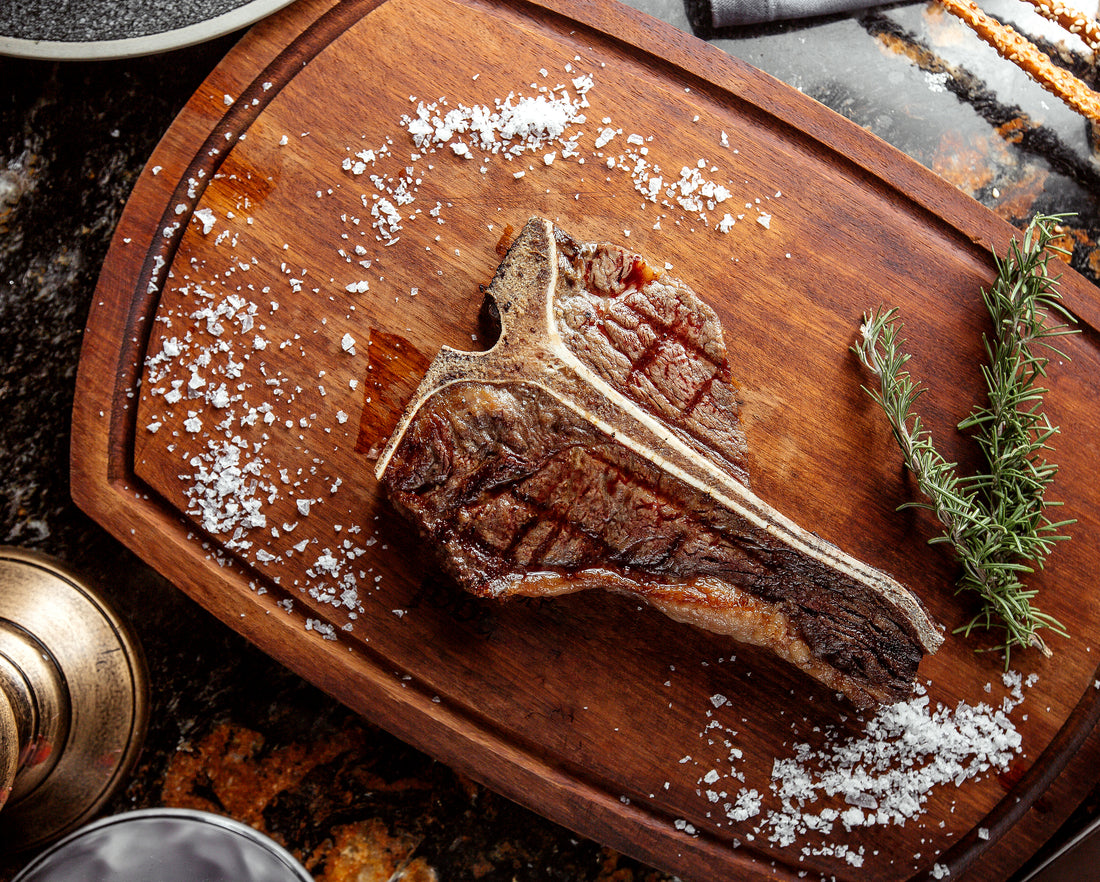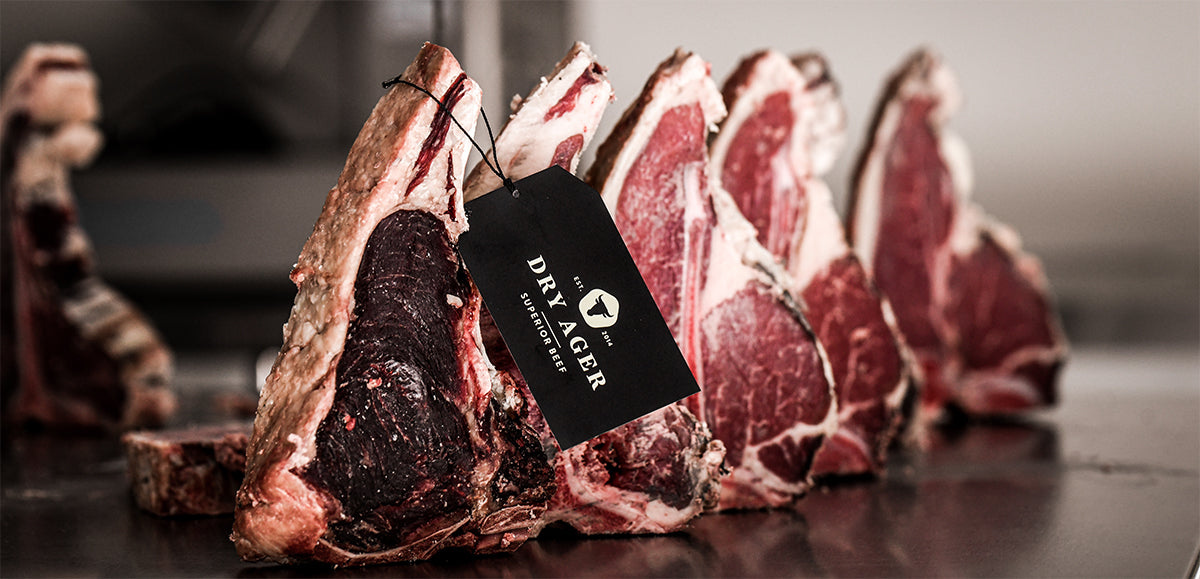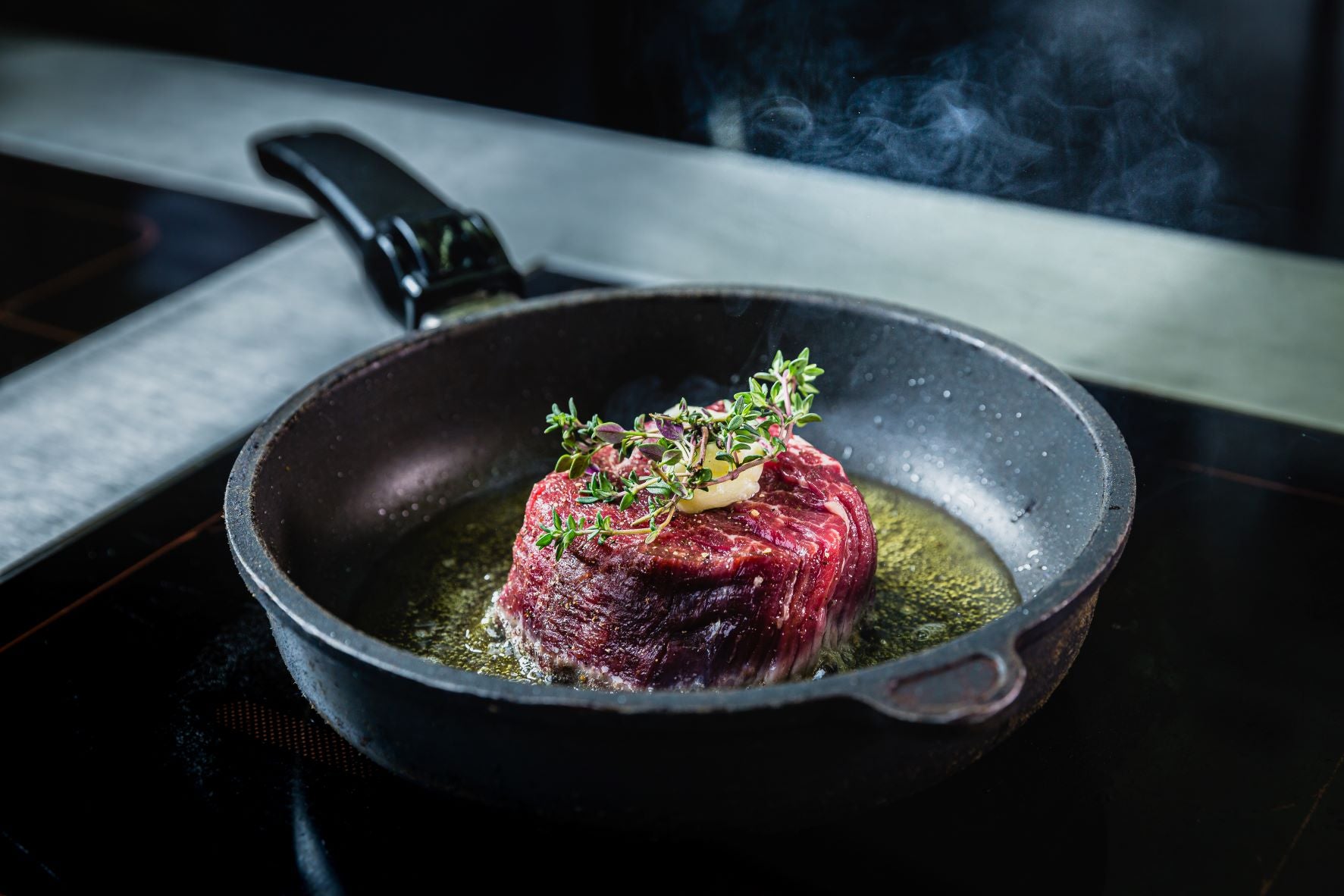Elevate Your T-Bone Game with Pro Tips

Cooking a T-bone to perfection is one of the ultimate tests for a home cook. T-bones are renowned for being harder to cook, as they have different cuts of tender meat on either side of the characteristic T-shaped bone. However, nailing the finish on your steak doesn’t need to be as difficult as it sounds.
Follow along as we guide you through the process of elevating your T-bone game with tried-and-true tips from the experts at Matangi.
Start with Quality Meat
All great meals begin with high-quality meat, and because the cut of your T-bone will respond well to a simplistic cook, you should choose the very best.
The T-bone steak is cut from the short loin, bridging two of the most tender and well-loved cuts of steak: the sirloin and the eye fillet. Look for well-marbled steaks with a deep, rich colour, indicating an even distribution of fat and healthy livestock.
The Dry-Age Difference
If possible, always source your T-bones dry-aged. Dry-ageing meat is like reducing a delicious stock: it condenses the flavour, enriching every morsel until the steak is bursting with the essence of deliciousness (umami!). This also tenderises the meat, creating what beef connoisseurs call ‘The King of Steaks”.
Bring Up to Room Temperature
Where possible, it’s best to let your steak come up to room temperature before cooking. While storing meat in the refrigerator is important to prevent it from going bad, taking it straight from the fridge to the grill will impact the cook.
The hot grill will shock the cold beef, and the heat will take much longer to reach the middle. This results in a tough, over-seared exterior and an uneven cook in the middle.
To avoid this, make sure to take your steak out of the fridge at least thirty minutes before grilling. Set it in its wrapping or a marinade on the counter. This allows the meat to relax, bringing out that delicious tenderness you are aiming for.
Master the Seasoning
Proper seasoning is essential to make or break your flavour profile. The key is to strike a balance, ensuring there’s enough seasoning to bring out the natural flavours of your T-bone without overwhelming the nuanced layers of taste.
Simplicity is your friend here for a great T-bone. A generous sprinkle of salt and pepper on both sides is more than enough, allowing the meat's natural flavours to shine. Be generous with your chosen oil to create a flavourful sear. If you want an additional boost of flavour, consider preparing a flavoured butter to baste your steak with as it cooks. Garlic, paprika, or rosemary are excellent pairing notes for a nutty, dry-aged T-bone.
Oil the Grate, Not the Steak
A novice may oil the steak rather than the grill or the pan. This technique can cause the meat to stick or cook unevenly. Beef is porous and will absorb whatever is put on it, including oil. So, if you oil your steak, parts of it will likely absorb the oil more than others, thus causing it to adhere to the grill.
Instead, use an oil with a high smoke point – canola or olive oil both work well. If grilling, use tongs and a paper towel to oil the grate before dropping your steak onto the grill. If pan-frying, generously coat the base of the pan with the oil and allow it to come up to heat before starting the sear on your T-bone.
Sear, Test, and Rest
Now that you’ve prepared appropriately, it’s time for the main event.
First, the sear. A perfectly cooked T-bone is seared on the outside and tender in the middle. Preheat your grill to a high heat, ensuring it’s well-oiled, then begin searing your steak. 2-3 minutes per side will usually suffice. This seals the outside of the beef, trapping all the delicious fats and juices in the meat to preserve its natural flavour. Continue cooking until your steak has reached your preferred cook – from rare to well-done. T-bones are best enjoyed medium to medium rare.
You can test your steak with a meat thermometer to determine how done it is. However, this will pierce the sear and can result in you leaking juices into your grill, losing delicious flavour and potentially drying out the steak. Many experienced grillers use the finger test. Gently press the centre of your steak with your fingers. If it feels soft and gives way, it’s rare. Slightly firmer is medium rare, and so on. This takes time and practice, but learning the craft without a meat thermometer is worthwhile.
From there, the last and most important thing to do with a T-bone is to rest it. It’s tempting to slice straight into the delicious steak, but hold fire and let your steak rest in a dish for at least five minutes. This allows the juices to redistribute in the meat, ensuring every single bite is flavour-packed and tender.
Experience the Matangi difference.
Our boutique Beef herd are bred specially for premium eating quality, and we take special care every step of the way. No compromises. It's just delicious, award-winning beef.
Ready to elevate your T-bone game once and for all? Shop our 50-day dry-aged T-bones to delight your tastebuds.







-v1698821311816.webp?1800x1800&options=w_65)













-v1698821311816.webp?1800x1800&options=w_60)



